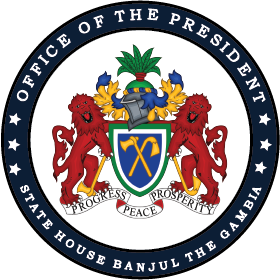SECTOR
Office of the Vice President
OBJECTIVE
The main objective of the National Population Policy (2007-2011) is to improve the quality of life for Gambians by raising living standards through addressing population dynamics, sustainable development, and socio-economic growth.
The specific objectives include:
-
Integrating population issues into all levels of development planning and programming.
-
Promoting rural development to reduce rural-urban migration.
-
Enhancing economic growth and reducing poverty.
-
Improving access to quality healthcare, education, housing, employment, and food security for families.
-
Ensuring affordable and accessible family planning services for all.
-
Raising awareness on sexual and reproductive health, particularly among youths.
-
Reducing high-risk pregnancies, illegal abortions, and unwanted pregnancies.
-
Combating HIV/AIDS and substance abuse among youths.
-
Mainstreaming gender equality and empowering women.
-
Improving the welfare of vulnerable groups, including children, the elderly, and persons with disabilities.
-
Strengthening environmental protection and sustainable use of resources.
-
Establishing reliable national data systems to support population planning and development.
CONTENT
Specific Issues Addressed:
- High fertility rates and rapid population growth.
-
Urbanization, rural-urban migration, and housing deficits.
-
Health challenges, including maternal and child health, HIV/AIDS, and malnutrition.
-
Gender disparities, including women's empowerment and child rights
-
Environmental degradation and food security
Strategies and Interventions: The policy outlines targeted strategies across sectors such as health, education, agriculture, environment, and urban planning. These include improving family planning services, promoting rural development, strengthening legislative reforms, and enhancing data collection for better decision-making.
Institutional Framework: Implementation is overseen by the National Population Commission, with decentralized structures at regional and district levels to promote grassroots involvement
Targets and Goals: Specific targets include reducing fertility, child and maternal mortality, poverty rates, and environmental degradation while improving education, healthcare access, and economic opportunities.
In essence, the policy is a roadmap for The Gambia to tackle its population-related challenges, fostering sustainable development and equitable quality of life for all citizens.
-
Ministry of Public Service
7 documents -
Office of The Vice President
3 documents -
Ministry of Agriculture, Livestock and Food Security
8 documents -
Ministry of Basic and Secondary Education
2 documents -
Ministry of Defence
3 documents -
Ministry of Environment, Climate Change and Natural Resources
9 documents -
Ministry of Finance and Economic Affairs
11 documents -
Ministry of Foreign Affairs and International Cooperation
2 documents -
Ministry of Health
30 documents -
Ministry of Higher Education, Research, Science and Technology
3 documents -
Ministry of Communications and Digital Economy
24 documents -
Ministry of Interior
3 documents -
Ministry of Justice
1 document -
Ministry of Petroleum and Energy
5 documents -
Ministry of Trade Industry and Employment
8 documents -
Ministry of Transport Works and Infrastructure
3 documents -
Ministry of Tourism and Culture
3 documents -
Ministry of Women, Children and Social Welfare
12 documents -
Ministry of Youths and Sports
2 documents -
Ministry of Land and Regional Government
1 document -
Ministry of Fisheries and Water Resources
3 documents -
Office of The President
0 documents

